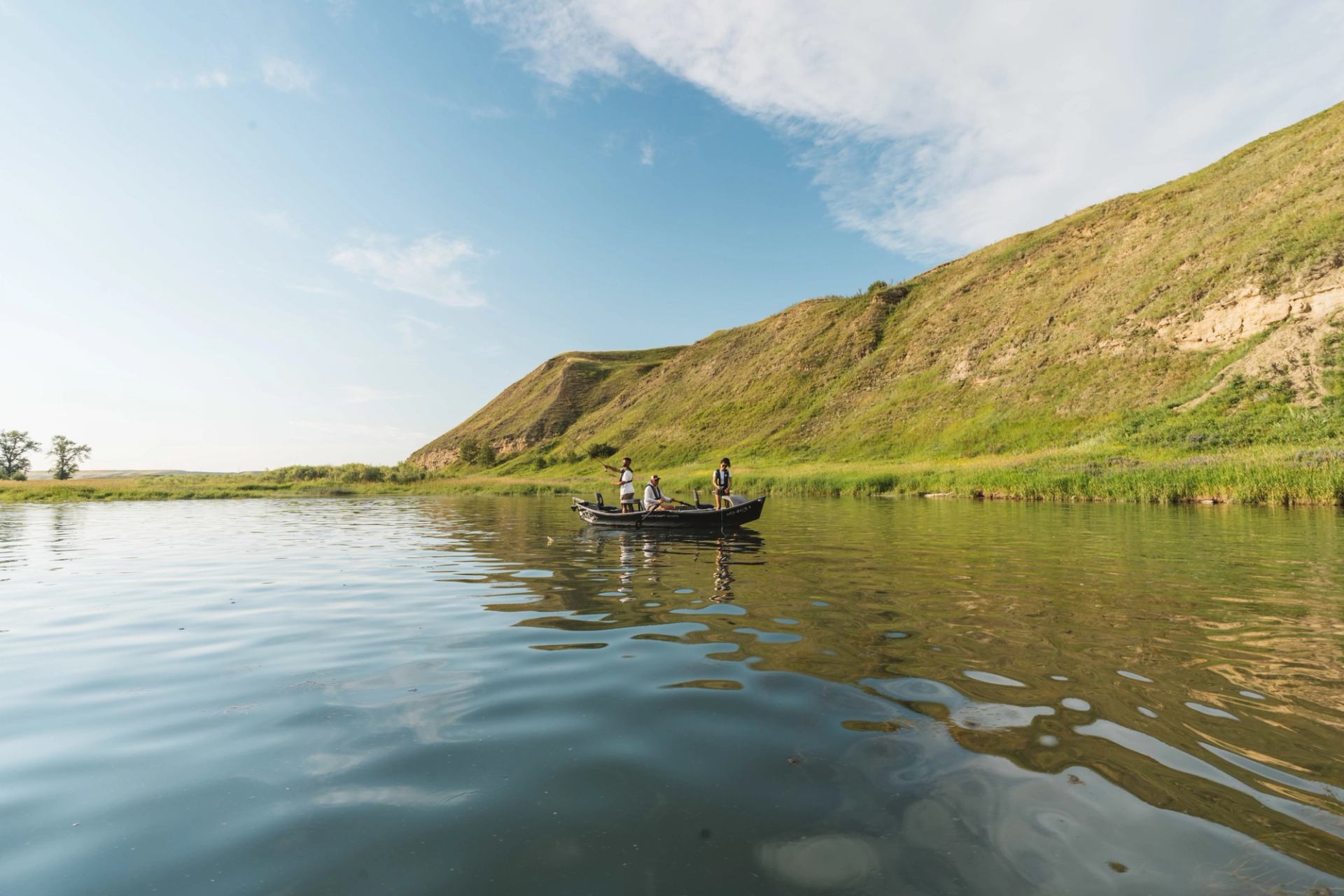Trophy trout. Colossal sturgeon. Walloping pike.
When it comes to fishing of any kind, Alberta’s diverse range of fish species, geographic regions, water bodies and climate make for spectacular days of fishing. Alberta is a world-renowned destination for fly fishing, with the famous Bow River flowing right through the city of Calgary. The mountain rivers and streams make for incredibly scenic days on the water too, whether you’re swinging flies or spinning.
And don’t write off winter fishing – frozen lakes and hungry fish make for fantastic days out under the low winter sun.



World-renowned waters
There’s no place like the Bow
Some of the best trout fishing in the world exists on the southern edge of the city of Calgary and to the south, where the Bow River’s nutrient-rich waters house countless fish. Pack your spinning gear or bust out your best flies, because these pools and riffles are waiting for you to cast a line into them.

The guided way to your best day
While the Bow River and Alberta’s mountain streams are world class, they’re not always the easiest waters to read. A guided fishing trip with an outfit like Drift Out West Fishing can be the difference that gets you into more fish and more water, especially if you’re looking to float the Bow!

Changing waters
Diverse aquatic ecosystems and species span Alberta
Travel up or down Alberta and you’ll note vast differences in both the fish and the landscapes. You could spend a lifetime chasing different species throughout different bodies of water. Target lake whitefish, burbot, Perch and massive northern pike with Slave Lake Fishing Tours up north, or get after walleye and trout with Alberta Fishing Charters on one of the many lakes in the south of the province.

Did you know?
Alberta’s Bow River contains one of the highest concentrations of trout per kilometre of any river in the world.
Fishing spots you’ll never forget

Conservation, sustainability and responsible fishing
Alberta works to manage our fisheries with an overall goal of ensuring fish and their habitats are healthy, productive and sustainable. Part of that goal includes requiring a license to fish and regulating seasons, catch and size limits, among other rules that help fish populations to thrive.

Featured stories
Frequently asked questions
Probably more than we can list off here! Some of the more popular species to target include rainbow trout, brown trout, brook trout, lake trout, northern pike, walleye, burbot and Rocky Mountain whitefish. You can always check for a body of water you are targeting in the sportfishing regulations to get an idea of which fish might be lurking below the surface.
You sure do! You can check out all the details for provincial bodies of water on the My Wild Alberta website. If you are fishing within National Park boundaries, separate permits and regulations apply, which can be viewed on the Parks Canada site.
The regulations vary widely depending on where you are in Alberta, the time of year, and the particular body of water you are fishing. Check out the My Wild Alberta site for complete details. If you are fishing within the National Parks, separate rules apply, which are easily viewed on the Parks Canada site.
Many of our mountain-fed rivers and streams are beholden to snow melt, meaning the water is “stained” or dirty from late May or early June for a few weeks at a time. While fishing is not impossible at this time, it might be a better time to seek out lakes to cast a line.
For those looking to brave the cold and dangle a line through the ice, you can truly fish any time of year.
If you are heading out on the water on your own, bringing your own gear makes sense, unless you’re really pining for all-new gear. Our many fishing shops and big-box stores can help equip you once you arrive if you’re in the mood to shop.
If you plan on hiring a guide, they may have gear for you to borrow or rent as well, so it would be worth checking with your outfitter of choice prior to your arrival.
Various lakes will have boat rentals in the area, as well as kayak and canoe rentals on smaller bodies of water. If you are hiring a guide or an outfitter for your trip, they may also have recommendations.
















